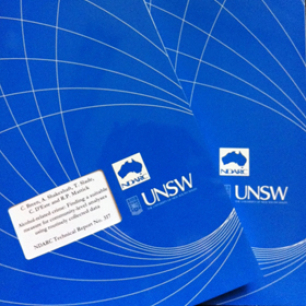NDARC Technical Report No. 219 (2005)
EXECUTIVE SUMMARY
Aim of project: The aim of this project was to determine which of four strategies, which if used to increase the provision of screening and brief intervention by Australian general practitioners (GPs), is the most cost-effective method in decreasing risky alcohol consumption among GP patients.
Rationale: Between 1992 and 2001, approximately 31,000 Australians died from alcohol-related disease and injury, with 75% of these deaths occurring among males. Harms resulting from excessive alcohol consumption not only utilise health care resources, but also contribute to lost productivity, road accident costs, and legal and court costs.
It is increasingly recognised that early screening and intervention with drinkers who are at-risk in the short-term may have significant benefits in the prevention of alcohol-related health and social problems (Gomel et al., 1998). This has meant a shift from primarily treating highly dependent drinkers to attempting to prevent harm among those whose alcohol consumption is typically characterised by low-dependent, episodic drinking to intoxication. As the primary providers of health care, GPs are in a strong position to effectively modify behavioural risk factors at the population level as approximately 80% of Australians visit their GP in a year (Beaulieu et al., 2002); and the majority of the population believe that lifestyle issues should be discussed as a routine part of medical consultations (Ashenden et al., 1997). GPs are also expected to have the necessary skills to screen and provide some form of brief intervention to assist their patients to modify drinking behaviours. However, GPs screen fewer than half their patients for alcohol consumption or issues, even when these may be implicated in a range of other presenting health problems (National Expert Advisory Committee on Alcohol, 2001).
Methods: This project used a modelling approach to combine known information on the effectiveness of four separate strategies to change GP behaviours and the resources used to implement these strategies, to assess their relative cost effectiveness. The four strategies were academic detailing, computerised reminder systems, target payments and interactive continuing medical education (CME). The model incorporated data on screening rates, alcohol consumption, rates of brief intervention by GPs, population that visit a GP, and the effectiveness and the costs of implementing the strategies.
Results: The computerised reminder system and academic detailing appear to be most effective in achieving a decrease in grams of alcohol consumed per year among risky drinkers. The cost differences (from baseline) for each of the various strategies are: $4.0 million for academic detailing, $5.0 million for interactive CME, $7.8 million for reminder systems, and $31.5 million for the target payment strategy. The incremental cost effectiveness ratio, which is the difference in costs divided by the difference in outcomes, has a considerable range: $50 per drink averted for academic detailing, $86 for interactive CME, $91 for computerised reminder systems and $691 for the target payment strategy.
One-way sensitivity analysis was used to explore uncertainty around many of the variables in the model. This confirmed the results, with the target payment strategy being the least efficient method of achieving a given decrease in alcohol consumption, although the relative cost effectiveness between the other three strategies varied depending upon assumptions made.
Discussion: Regardless of the assumptions made, the effectiveness of the targeted payment strategy appears to be the least cost effective method to achieve a decrease in risky alcohol consumption, while the other three strategies appear reasonably comparable. This study, which used data from previously published work, was often limited by the availability of data. Another limitation was that only single strategies for invoking change were evaluated, and some studies report that combinations of strategies are the most effective however, the data for evaluating the cost effectiveness of combined strategies was not available.
There is obviously much more to learn about how to alter GPs behaviours with respect to screening for excessive alcohol use, but what is clear, is given the available data is using a targeted payment strategy is not an efficient use of resources.
Citation: Shanahan, M., Shakeshaft, A., Fawcett, J., Doran, C. and Mattick, R.P. (2005) Modelling the costs and outcomes of changing general practitioner behaviours with respect to screening for at-risk drinking, Sydney: National Drug and Alcohol Research Centre.


